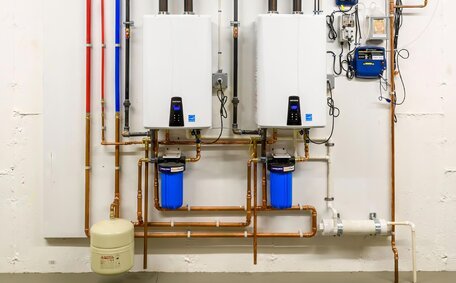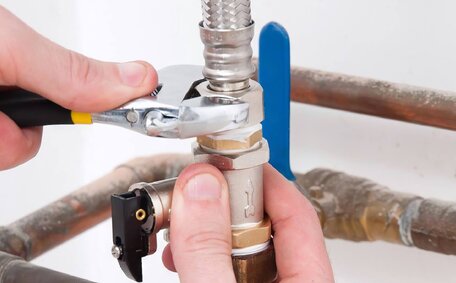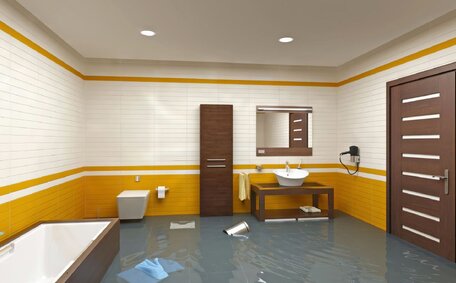Introduction to Pipe Relining for Complex Geometries
Learn how pipe relining overcomes the complexities of repairing pipes with sharp bends and angles. It’s a trenchless rehabilitation method that can be used to repair damaged pipes with complex bends and angles. It involves pulling or inverting a resin-impregnated liner into the existing pipe, which effectively repairs the old structure by creating a new seamless pipe within it.
The pipe relining technique in Sydney employs liners that adapt to the shape of the host pipe, conforming to all contours, offsets, and irregularities.
This innovation allows pipe relining in Sydney to be highly effective, creating new seamless interiors for complex pipe geometries often found in ageing plumbing systems. Pipe relining offers a less disruptive alternative to traditional pipe replacement, enhancing flow capacity and structural integrity without extensive excavation.
At Bella Vista Plumbing, we leverage over 25 years of experience providing sewer pipe relining solutions for pipes of various sizes, including within Sydney’s residential and commercial plumbing systems. Our expertise extends to relining a diverse range of drain pipes, handling sizes from 100mm to 300mm in diameter and accommodating a variety of bends, junctions, and angle differences.
Beyond emergency plumbing, we tackle blocked drains, service hot water systems, conduct pipe repairs, and more, crafting seamless, bespoke solutions.
Explore the advantages of sewer pipe relining, a crucial method for refurbishing damaged pipes without complete replacement. Contact us to get a free quote and discover how pipe relining services in Sydney can provide a seamless, long-term, and cost-effective solution for your new pipe with complex geometries, but without the high cost of pipe replacement and inconvenience of traditional methods.
Common Challenges When Relining Non-Linear Pipes
Relining your pipes with multiple bends, junctions or angle variations poses unique challenges compared to straight pipe sections.
A potential issue lies in liner misalignment or shifting during the installation, with the end goal being the formation of a new seamless pipe within the existing structure. Accurately guiding the flexible liner into place or inverting it through the pipe’s tight bends is key to avoiding misshaping or bunching, which can result in uneven application or blockages.
Care must be taken to make sure the host pipe is precisely measured, employing specialist techniques to ensure a relining method that places a seamless pipe within the old one with precision. We address your plumbing challenges, especially for drain pipes and sewer lines, using custom-made liners and specialised materials for a perfect fit. Steering devices and rollers may also assist navigation around tight bends.
Our strategic location in Sydney guarantees efficient management of access points for relining non-linear pipes. The access point and exit must align with the pipe geometry so that the liner can be fully extended throughout the length to be repaired. Our team dispatches relining rigs designed to negotiate multiple bends for pipes 100-300mm in diameter.
With advanced equipment, experienced technicians and innovative solutions tailored to each unique scenario, Our methodology focuses on the effective installation of a pipe within an existing one to tackle challenges in relining complex or aging drain sewer systems, particularly in the Eastern Suburbs.
Specialized Materials Used in Relining Angled Pipes
Relining complex pipe geometries in your home requires the use of advanced epoxy resins and installation materials to handle tight bends and changes in diameter.
We use Class A glass-reinforced epoxy resin, renowned for its superior adhesion and flexibility, ideal for larger pipes. The resin is non-toxic, safe for potable water contact and chemically resistant. Its minimal shrinkage during curing eliminates voids and detachment, firmly entrenching the pipe within the old infrastructure.
Available in thicknesses from 3mm to 12mm, Our seamless GRE pipes provide substantial adaptability. They can conform to offsets, protruding connections and branches with diameter variations from 100mm to 300mm.
The resin-saturated liner felt, now a component that can help repair pipes with structural lining material, can be fed through an inversion drum. Strong but flexible launch tubes are manoeuvred, guiding the tube into the appropriate position around multiple bends with the assistance of technicians. Technologies such as radio frequency tracking, CCTV and temperature monitoring allow for close observation as the liner is positioned correctly.
Once in place, hot water is pumped to activate curing with steam to create a seamless pipe within the old, evenly heating the entire pipe length. The epoxy then chemically reacts to form a durable, jointless liner that takes on the exact contours of the host pipe, ensuring a consistent flow rate.
Advanced Techniques for Accommodating Bends and Junctions
There are two main trenchless relining techniques Your local professionals have used trenchless methods, capable of renewing pipes with multiple bends, junctions and diameter changes - inversion lining and pull-in-place lining.
Inversion lining employs air or water pressure to turn a resin-saturated felt liner inside-out within the host pipe. The liner pipe Relining self-expands, conforming precisely to the pipe contours. Capable of navigating multiple 45 and 90-degree bends, this method is suitable for plumbing pipes with diameters ranging from 100-300mm and can handle liner lengths up to 200 metres.
Pull-in-place relining, a technique more efficient than traditional pipe replacement, involves a liner being inserted into the damaged pipe via a mechanical process. Pipe geometries accommodated can also include various combinations of lateral connections, offsets, elbows, tees and diameter changes from 100-900mm.
Ideal for lengths exceeding 500 metres, this method uses Durable polymer materials smoothly navigate bends before expanding against the pipe walls using heat and pressure.
Both CIPP inversion lining and pull-in-place are aspects of our advanced relining system, involving experienced technicians who are able reline by monitoring pressures and tracking the liner’s progress. The end result is a relined pipe, with a seamless structure within the old one, ensuring no mismatches with the interior pipe contours over hundreds of metres.
Robotic Cutters and cameras for Precision
Robotic cutters and CCTV cameras are essential for precise relining of pipes with complex bends or variations.
Prior to liner installation, we undertake a crucial step of thoroughly inspecting the host pipe using a robotic crawler-mounted camera. As we assess the extent damage, this process creates a detailed 360 degree visual profile of the pipe contours - noting diameter changes, angles and connections. Accurately mapping this allows the liner and installation process to be custom-engineered.
Such tasks, carried out with precision, can be completed using robotic cutters that trim intruding connections or cut back pipe sections to create a smooth edge. They can shave obstacles protruding to guarantee smooth insertions, handling pipes of several inches diameter, ensuring the liner forms a seamless fit. The cutters are mounted on flexible heads for steering around bends.
Cameras provide real-time visual guidance during liner installation. Operators can observe the liner’s placement on monitors and make necessary adjustments using a robotic cutter as it is positioned around tight radiuses, adeptly repairing your damaged sections. Accurate positioning is crucial to prevent issues like bridging, wrinkles or blockages during the process, a reason we would highly recommend professional installation.
Post-installation CCTV inspection checks the liner has fully expanded and bonded evenly along the entire length without any gaps or defects. Our use of robotic technology combined with more than 25 years of relining experience permits the precise renewal of your pipe, making it a cost-effective pipe solution.
One-Piece Junction Liners
An innovation enhancing our Sydney pipe relining services is the development of seamless one-piece junction liners, accommodating complex junctions.
Custom-fitted to pipe junctions’ exact geometry, our pre-shaped liners are ideal for repairing drains and sewer lines with multiple branches and bends. The flexibility of the resin-saturated liner can be used to conform precisely within the junction on installation.
Liners are impregnated under controlled factory conditions rather than on-site for maximum durability and performance. Their seamless design ensures continuous pipe-within-pipe repair, preventing infiltration and preserving integrity, unlike segmented liners and welds.
We have reline junctions from 100mm to 300mm diameter featuring multiple intersecting branches, 45 and 90 degree bends along with offset connections over a length of 2 metres in a single installation. One-piece junction liners, a product of used trenchless pipe relining techniques, offer an efficient and durable no-dig solution for intricate pipe geometries, and are available through our team.
Importance of Thorough Cleaning and Inspection
Thorough cleaning and inspection of pipes prior to relining is critically important to ensure success.
We deploy high-pressure water jetting to effectively clear interior pipe surfaces of obstructions like stubborn tree roots. This procedure efficiently removes obstructions such as tree roots, debris, scale, and corrosion, resulting in an ideal substrate for liner bonding.
Following cleaning, we employ CCTV cameras to conduct detailed inspections of the sewer and stormwater pipes. This identifies existing damage while mapping contours, diameters, angles and junctions to engineer a precision-fitted liner.
Any remaining obstacles are trimmed back using robotic cutters to accommodate the liner. Final CCTV checks confirm smooth edges and clearance.
Proper pipe preparation ensures the resin-impregnated liner has the best possible surface contact in the access area for curing and adhesion without gaps or voids. Our relining solutions provide long-term integrity by starting from the ground up with thorough cleaning and inspection.
Curing Methods for Faster, Stronger Repairs
Curing is a critical final step in the trenchless pipe relining process which transforms the flexible resin-impregnated liner into a rigid, seamless and structural pipe.
We predominantly utilise hot water or steam curing which involves pumping heated water between 90°C to 180°C through the liner once it is in position. This activates the epoxy resin, ensuring the pipe can chemically react to create a new seamless structure, durable within the old one that hardens and bonds to the host pipe walls.
Controlled heat exposure evenly across the entire pipe’s inner surface results in thorough curing, ensuring there are no spots within the pipe that could lead to future failure due to lack of adhesion. Pressure regulation during curing compacts the liner, preventing the formation of air pockets.
Hot water curing enables fast installation with a typical 150-metre liner taking less than 3 hours to harden into place, thus creating a seamless pipe within the old one, depending on thickness. The restored pipe is immediately ready for service with no wait time for repairs or disruption. The process facilitates rapid relining during calls for emergency repair of a damaged drain.
Hot water activated epoxy resin liners can used wide array of pipe sizes, provide superior mechanical performance over ambient cure products. Test results show greater tensile strength, compression resistance, hardness and flexural properties. This can be used a wide breadth of applications to ensure exceptional structural integrity and longevity for the renewed pipe.
When to Choose a Professional for Complex Jobs
There are several key times when it is best to utilise a professional plumbing service like Bella Vista Plumbing for complex pipe relining projects.
DIY relining solutions have limitations in terms of tools, materials and capability to take on intricate pipe geometries. Attempting challenging repairs without experience risks liner failure or misalignment which might lead to leaks or blockages, so don’t hesitate to contact our professional expertise that can assist.
Professionals charge per meter, having specialised equipment like inversion drums and robotic cutters as well as advanced materials for relining sewer pipes such as thick or reinforced liners. Technicians are trained extensively in custom fabrication for pipe lining, liner installation, curing and solving plumbing problems in complex site scenarios.
Complex scenarios warranting professional trenchless rehabilitation include work on aged PVC and cast iron pipes:
- Pipes with multiple tight bends or angles exceeding 45 degrees
- Junctions with more than 3 intersecting pipes
- Mixed materials e.g. clay to copper transitions
- Multi-storey plumbing stacks with vertical offsets
- Restricted access requiring small equipment
- Emergency broken pipes failures needing rapid response
Reputable companies like ours pride themselves on serving our customers with quality work and a dedicated team, offering fully guaranteed workmanship and peace of mind when relining intricate pipe systems. We invite you to assess our expertise for your project; contact us to learn more and discuss your options.
The Future of Pipe Relining
As trenchless pipe repair technology continues advancing, the future looks bright for increasingly complex pipe relining capabilities, all detailed on our website.
Innovations in materials science are yielding new resin formulas and liner materials with improved strength, adhesiveness, corrosion resistance, pressure tolerance, and the skill to manoeuvre tight bends; reach out to learn more about these advancements. Robotic systems like CCTV cameras, cutters and installation devices used in relining can be even smarter, faster and more manoeuvrable.
Our relining technology, critical for repairing pipes, includes robotics that can traverse various planes and self-navigate through intricate systems. Continued development of flexible materials and nimble, multi-axial robotic systems will enable the safe negotiation of complex layouts, easily accommodating an array of pipes and cables.
Integrated sensor networks and AI may allow future pipe infrastructure to self-monitor and report issues, where relining jobs can be nominated for proactive repair long before leaks or breaks occur. Big data analytics can map trends and weaknesses to target relining efforts more strategically.
At Bella Vista Plumbing, we continuously invest in professional development, certifications, technologies, and hands-on project experience. find out how this keeps us at the cutting edge of pipe rehabilitation. Trenchless methods are only going to become faster, less invasive and capable of overcoming more complex challenges – providing environmentally friendly and more resilient plumbing solutions.






